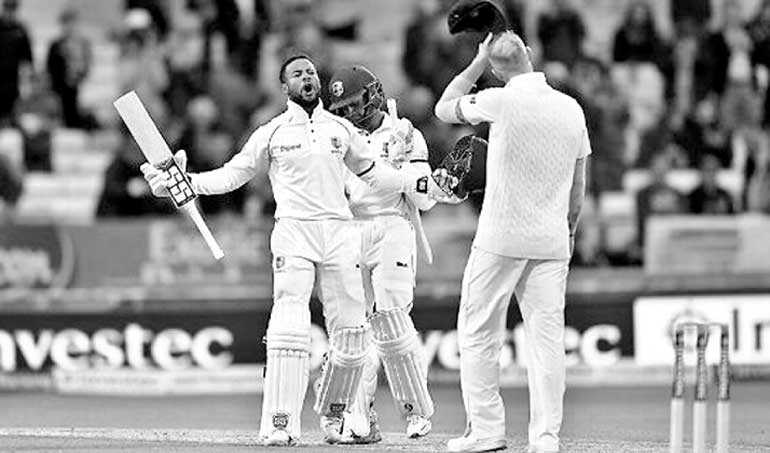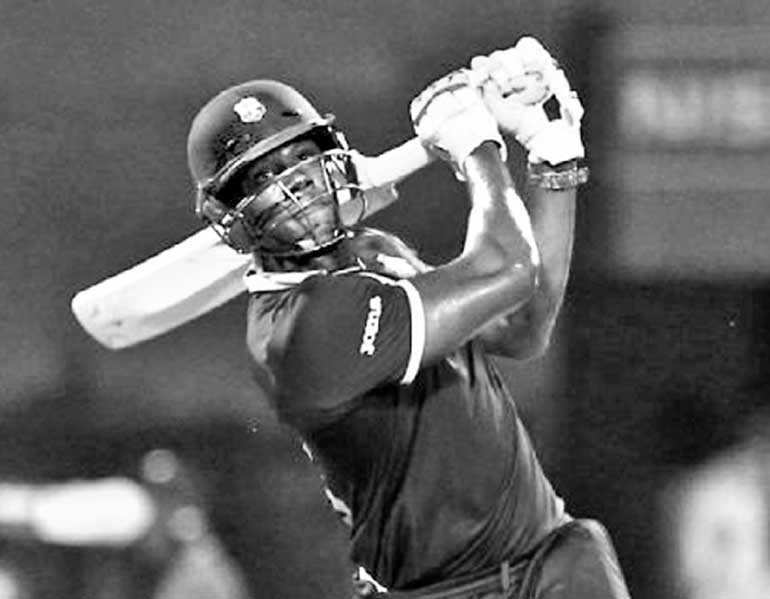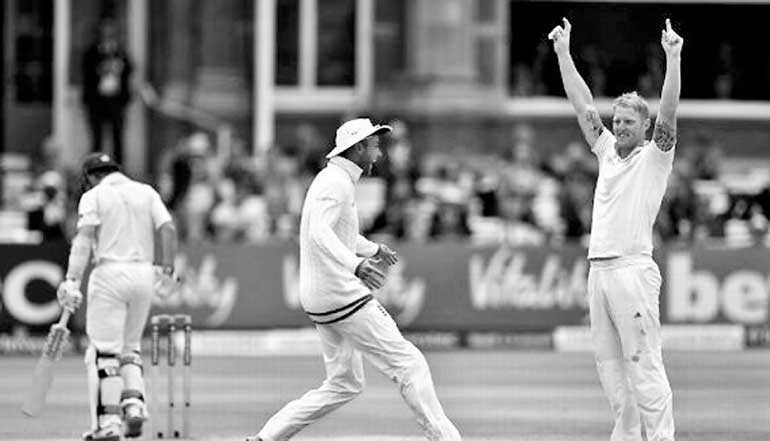Wednesday Jul 02, 2025
Wednesday Jul 02, 2025
Saturday, 4 January 2020 00:10 - - {{hitsCtrl.values.hits}}

Mahela Jayawardene and Kumar Sangakkara signed off with a win to remember - ICC
By Sidharth Monga
This is nowhere near the most exciting match of the decade, or even the most exciting T20 match. It is remembered only during debates on whether batsmen should declare themselves out when struggling in a T20 innings. Yet it is also a tactical masterclass in defensive T20 cricket. In the final of the 2014 World T20, Sri Lanka gave lives to three of the most dangerous batsmen in the world - Virat Kohli, Rohit Sharma and Yuvraj Singh – but managed to execute their defensive bowling long enough to keep India down to 130 for 4, still the third lowest score in a full T20I by a side that lost four wickets or fewer batting first.
Three of the shrewdest brains in cricket at the time, Sri Lanka’s captain, Lasith Malinga, and former captains Kumar Sangakkara and Mahela Jayawardene, came together to plan this heist against the heavy favourites. Two years before, in another final, they had had West Indies at 87 for 5 but failed to finish well. Now they knew wickets didn’t matter much if they could get their match-ups and execution right. Everything was spot on, Malinga and Nuwan Kulasekara bowled superb wide yorkers at the death, and India were handcuffed.
Where’s the human drama, you might ask. Yuvraj Singh, Man of the Tournament in the 50-over World Cup, beater of cancer, scored just 11 off 21 balls as he tried to fight his way through, not throwing it away, and denying Kohli the strike. Sangakkara and Jayawardene, losers in three World Cup finals before this, finished with a title in what they had announced was their last T20 international.
 By Karthik Krishnaswamy
By Karthik Krishnaswamy
You don’t show up for a Test match in the subcontinent with only three front-line bowlers, of whom only one is a spinner, and hope that you can make up for it with part-timers and batting depth. It won’t work. But for Zimbabwe in the Sri Lankan summer of 2017, pretty much everything seemed to work. Having won the ODI series 3-2, they assembled a mad scientist’s XI for their first away Test in nearly three years, and almost pulled off a miracle. That was mostly down to their captain, Graeme Cremer, who made their bowling combination look almost viable by getting through 87.3 overs - the most by anyone in a non-drawn Test match in this decade. His loopy, bouncy, threatening legspin accounted for nine wickets. That heroic effort was backed by a pair of outstanding hundreds: 160 by the tall, unhurried Craig Ervine, after Zimbabwe had slipped to 38 for 3 on the first morning, and a cathartic third-innings 127 by Sikandar Raza to turn 23 for 4 into 377 all out. That left Sri Lanka 388 to win. If they got there, it would be the biggest target ever achieved on Sri Lankan soil, and after Cremer had Angelo Mathews caught and bowled to make it 203 for 5, Zimbabwe probably should have wrapped it up. But they didn’t. Sri Lanka rode home on the back of missed chances, a controversial stumping decision, and the spunk and smarts of Niroshan Dickwella and Asela Gunaratne. It was an epic Test match full of epic performances, the two teams’ respective decades compressed into five riveting days: a wild rollercoaster ride for one, desperate heartbreak for the other.

Can't rain on this parade - Angelo Mathews dares
the skies to pour after his winning run - AFP
By Andrew Fidel Fernando
July and August are kite-flying months in Sri Lanka. When May’s monsoon has rained itself out and the wind begins to blow strong off the ocean, kites take over corner shops, beach sides and the sky.
The one that blew above Galle’s 16th-century fort on day five of the 2014 Test between Sri Lanka and Pakistan was a maaluwa kite – a fish – blue, green, red and yellow, with a diamond head and a flared bottom. It watched through the heat of the day as Rangana Herath shook a soporific Test wide awake, taking 6 for 48 to set up a tight victory push.
In the evening the kite soared above a rapidly filling stadium, as locals poured out of homes, shops and bus stands. When the ground was full, excited squeals of thousands from the fort ramparts overlooking the ground rose up to meet the kite. And then on those ocean winds came a monumental dark cloud, growling thunder, flashing lightning. What seemed like broad daylight is reduced to proper dusk, and although Pakistan are bowling their quickest men, captain Angelo Mathews - in the midst of his greatest year - is more worried about the cloud than getting hit, and is flailing at everything. He hooks Junaid Khan for four, carves him through point, then launches him over cow corner. For Mohammad Talha he reserves his best shot, a hooked six into a joyous eastern bank to tie the game, the party, like the rain, on the brink of spectacularly breaking out. He nudges the next ball to midwicket, and he is no more than halfway down the pitch to the other end when the sky opens up. By the time Mathews raises his arms in celebration, he’s practically soaked. In the stands and on the fort, thousands whoop and holler and dance, uncaring. And then, finally, all soaked through, the kite sinks lower and lower, having presided over the perfect Sri Lankan day.

Hope for the best centuries in both innings and a win no one saw coming – Getty Images
By Alan Gardner
This was a match for which the script couldn’t have been clearer. West Indies, winless in England since 2000, arrived in Leeds on the back of an innings-and-209-run shellacking in the first Test, and seemingly set to take another round of punishment. But that wasn’t how things played out after England won the toss at Headingley, that most capricious of grounds. Centuries from Kraigg Brathwaite andShai Hope helped West Indies to a 169-run lead, only for the hosts to turn things around on the fourth day, enabling Joe Root to declare on 490 for 8. And then things really got interesting. Asked to make 322, West Indies were once again spurred on by Brathwaite and Hope; and while the former fell five runs short, Hope’s unbeaten 118 made him, incredibly, the first man to score a hundred in each innings of a first-class match on Yorkshire’s home patch. A healthy fifth-day crowd had turned up in expectation of an England win, but dawning realisation saw the Headingley mood turn increasingly fretful. West Indies walked in as easy targets but walked off having chased their target with ease.
(Source: https://www.espncricinfo.com/story/_/id/28406994/espncricinfo-writers-pick-their-top-match-2010s)

Swinging for the hills - Carlos Brathwaite hit England's hopes for six, six, six, six - Associated Press
By Osman Samiuddin
Usually the context would have been enough. West Indies, still universally loved, against England, still universally not loved; West Indies, still in a pay dispute; West Indies still being written off; West Indies with some of the format’s most electrifying athletes; England, only now beginning to take the format seriously.
Darren Sammy, the World’s Nicest Guy, calling out the West Indies board minutes after becoming one of only two West Indians to captain his side to two world titles; Marlon Samuels calling out Shane Warne in his post-match press conference, still padded, legs up on the table. With peripherals like these, who needed the actual sport itself?
As it turned out, the game went really well. It was lowish-scoring but full of the little moves that data and analytics now shed clearer light on: Joe Root opening the bowling for just one over and picking up two wickets; Samuel Badree, so schoolteacherly in this team of detention students, bossing the opening overs.
Then the finish, and there can never have been a more explosive one. There have been last-ball sixes to win or tie games, but four sixes in four balls to kill a chase? And to distil an entire strategy - dot balls don’t matter if you hit the other ones for six - to its purest, at this moment? Beat that.

MasterStokes – Ben Stokes put a crimp in Brendon McCullum’s plans of a second wave of attack by taking his and Kane Williamson’s wickets in successive balls – Getty Images
By Andrew Miller
World Cup-winning hindsight has conferred a special status on New Zealand’s tour of England in 2015. This was Ground Zero for the ambitions of an England team that had stared into the void in the preceding 18 months - from the rancour following the 5-0 Ashes whitewash to humiliation at the 2015 World Cup. And in keeping with the sour mood that had enveloped English cricket that spring, the first home Test of the season began with an all-too-familiar crisis - 30 for 4 inside the first hour, as New Zealand’s seamers ran riot in spite of cloudless skies. And though Joe Root and Ben Stokes served notice of the team’s residual gumption with a pair of 90s, their fightback was put in context by a Kane Williamson masterclass. With 523 on the board in their first innings, New Zealand were not about to lose this one, surely? But then it started to happen. Alastair Cook, England’s beleaguered, one-paced, anachronistic leader, set about laying down an obdurate rhythm - at first, it seemed, with a view to saving the game, but the further his nine-hour 162 stretched, the more his speed-metal team-mates were able to riff to their heart’s content. Stokes took his shredding straight to the record books, his 85-ball century becoming the fastest ever witnessed in a Lord’s Test. For any ordinary opponent, a target of 345 would have been off the agenda, especially after their openers were gone for ducks in consecutive overs. But Brendon McCullum found ordinary boring - his plan had been to launch “a second wave of attack”. Stokes, blossoming as a game changer before our eyes, refused to let this happen. After he prised out Williamson in the gully, a searing inswinger bowled McCullum first ball, to put the result beyond doubt.
It was in one-day cricket that McCullum’s Kiwis passed on the most telling lessons to a new generation of English ball-strikers. But the joyous endeavours in this five-day spectacle were precisely what the game needed to banish the pervading gloom, and pave the way for the frolics to follow.
Discover Kapruka, the leading online shopping platform in Sri Lanka, where you can conveniently send Gifts and Flowers to your loved ones for any event including Valentine ’s Day. Explore a wide range of popular Shopping Categories on Kapruka, including Toys, Groceries, Electronics, Birthday Cakes, Fruits, Chocolates, Flower Bouquets, Clothing, Watches, Lingerie, Gift Sets and Jewellery. Also if you’re interested in selling with Kapruka, Partner Central by Kapruka is the best solution to start with. Moreover, through Kapruka Global Shop, you can also enjoy the convenience of purchasing products from renowned platforms like Amazon and eBay and have them delivered to Sri Lanka.
Discover Kapruka, the leading online shopping platform in Sri Lanka, where you can conveniently send Gifts and Flowers to your loved ones for any event including Valentine ’s Day. Explore a wide range of popular Shopping Categories on Kapruka, including Toys, Groceries, Electronics, Birthday Cakes, Fruits, Chocolates, Flower Bouquets, Clothing, Watches, Lingerie, Gift Sets and Jewellery. Also if you’re interested in selling with Kapruka, Partner Central by Kapruka is the best solution to start with. Moreover, through Kapruka Global Shop, you can also enjoy the convenience of purchasing products from renowned platforms like Amazon and eBay and have them delivered to Sri Lanka.